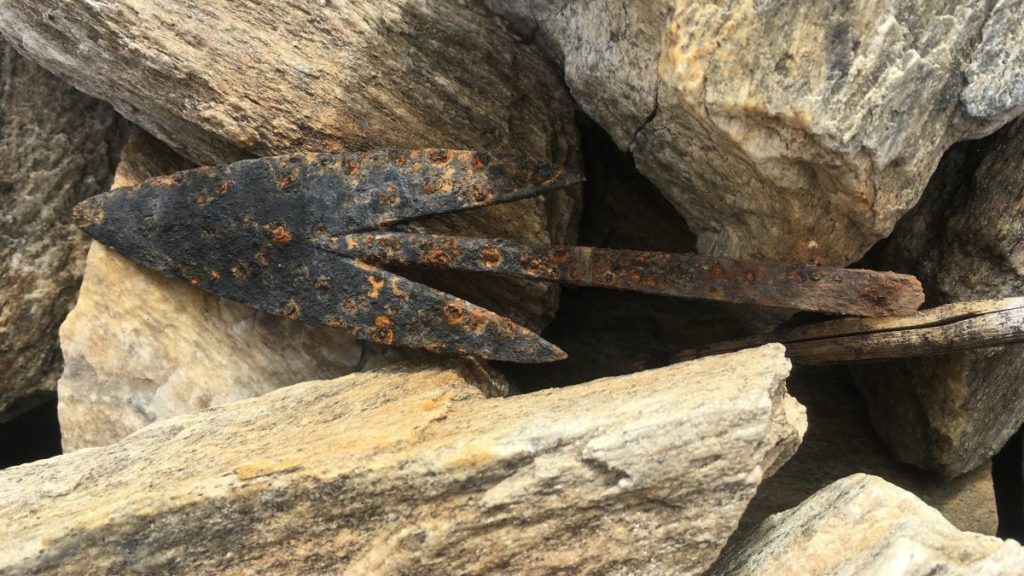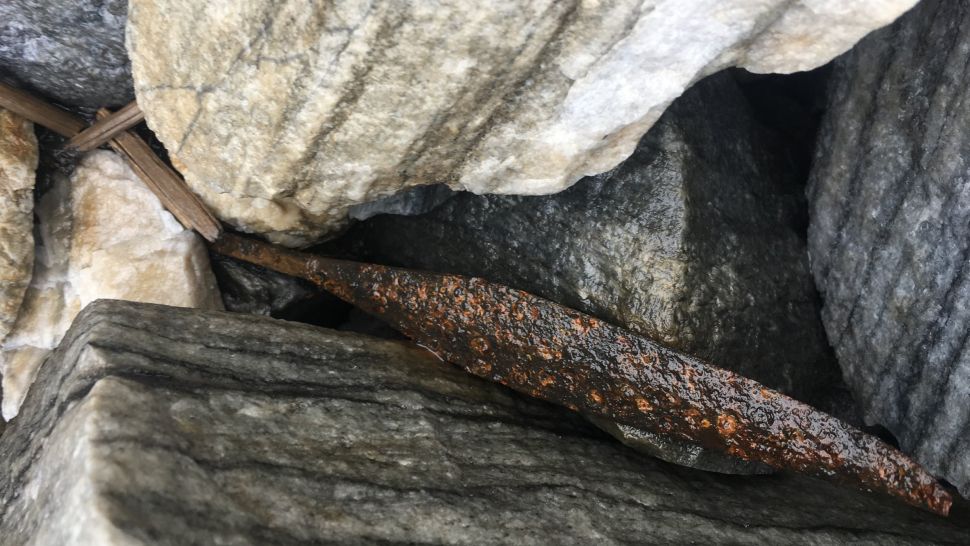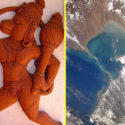Melting Glaciers Reveal 1,700-Year-Old Weapons Used By Reindeer Hunters
On a lonely mountain in Norway, glacial archaeologists unearthed weaponry and secret hideaways where stealthy hunters waited for reindeer over a millennium ago.
The archaeological crew discovered five arrows while surveying a section of the inland mountain peak Sandgrovskaret, three over 1,700 years old. In addition, the researchers uncovered 40 stone-built hunting blinds, which rendered the hunters “invisible” to adjacent reindeer.
“The hunter would get up and start shooting arrows when the reindeer got within 10-20 meters [33 to 66 feet], said Lars Pil, an archaeologist at the Department of Cultural Heritage, Innlandet County Council, Norway, co-director of the Glacier Archaeology Program, and editor of the Secrets of the Ice website.”

Pil and his colleagues have spent years trekking through the mountains, searching for items exposed by receding glaciers. They discovered this site in 2013 but couldn’t conduct a large-scale systematic survey until 2018, when they found the weaponry and hunting blinds. “There is a lot of melting owing to climate change,” he explained, “and we have to prioritize other sites in the short time window for glacial archaeological study.”
Three of the five arrows still have their iron arrowheads. According to Pil, these weapons are likely from between 300 and 600 A.D., based on the forms of the arrowheads.
Pil told Live Science in an email that one of the three iron arrowheads is “an uncommon form not found at the ice previously and scarcely in graves in the lowlands, either.” When Secrets of the Ice published the discovery on social media in February, he remarked that “quite a few people said it had to be a spearhead,” but that “the arrow shaft was recovered next it. Thus it is an arrow.”
According to Pil, the other two arrows, which don’t have iron arrowheads, are most likely from the first millennium B.C.
The arrows couldn’t have traveled more than 66 feet (20 meters). “As a result, the hunters required a haven. And if there wasn’t one, they made one from scratch. “Secrets of the Ice is a book written by Secrets of the Ice.

The hunters didn’t dwell on the 1,900 meter-high (6,234-foot) mountain. Espen Finstad, a glacial archaeologist, told sciencenorway.no, “Most likely they lived down in the lowlands, but certainly had enormous hunting stations higher up in the mountains.” People in this area lived in small communities during the Stone Age. They later dwelt in “great longhouses down in the valley” during the Iron Age, according to Finstad. According to Live Science, glacier archaeologists announced the discovery of several of these longhouses in 2021.
Pil said the crew also discovered 77 pieces of reindeer antler and bone, as well as 32 scaring sticks, which would have been buried like fence posts to guide scared reindeer toward the waiting archers. He noted that the scaring sticks date from between 200 and 1000 A.D., during the Iron Age.
“Scaring sticks were employed to lead the reindeer toward the hunting blinds,” Pil told Live Science, “but exactly how this happened is still something we are attempting to figure out.”
Pil and his colleagues intend to continue their ice melting observations in surrounding mountains. After all, time is running out; according to a translated statement made in February by the Norwegian Water Resources and Energy Directorate, the broad glacier area in Norway has fallen by 14% since surveyed the last time glaciers from 1999 to 2006. (NVE).



